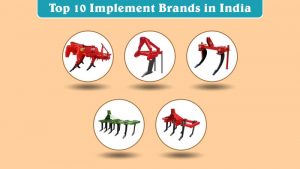Sugarcane (Saccharum officinarum) family Gramineae (Poaceae) is a generally developed cash crop in India. It gives work to over a million people. Sugarcane developing nations of the world lay between the scope 36.7° north and 31.0° south of the equator stretching out from tropical to subtropical zones.
Sugar cane began in New Guinea where it has been known for a great many years. Sugar stick plants spread along with human movement courses to Asia and the Indian subcontinent.
Here it cross-reared with some wild sugar stick family members to create the sugar stick we know today. The development of sugarcane in India dates to the Vedic time frame. It is presently generally acknowledged that India is the first home of Saccharum species.
Extensively there are two unmistakable agro-climatic locales of sugarcane development in India, viz., tropical and subtropical. Tropical locale Shared about 45% of the all-out sugarcane territory and creation in the nation.
The tropical sugarcane area comprises sugarcane agro-climatic peninsular zone and Coastal zone which incorporates the conditions of Maharashtra, Andhra Pradesh, Tamil Nadu, Karnataka, Gujarat, Madhya Pradesh, Goa, Pondicherry and Kerala.
Around 55 percent of all out-stick zones in the nation are in the sub-tropics. U.P, Bihar, Haryana, and Punjab go under this area.
Sugarcane develops in 1 year in North India and 18 months in South India. Collecting sugarcane at an appropriate time for example top development, by receiving the right method is important to acknowledge the greatest load of the millable sticks (along these lines sugar) created with least conceivable field misfortunes under the given developing condition.
Collecting either under-matured or over-matured sticks with an ill-advised strategy for reaping prompts misfortune in stick yield, sugar recuperation, juice quality, and issues in processing because of superfluous issue.
Manual Harvesting of sugarcane:
Hand blades, cutting edge, or hand tomahawks are utilized for manual harvesting. It requires skilled workers as an ill-advised gathering of sticks prompts loss of stick and sugar yield, juice quality, and issues in processing because of superfluous issues.
Mechanical Harvesting:
Sugarcane is cut by a mechanical reaper that moves along the columns of the stick expelling the verdant highest points of the stick and stopping the tail into pieces or “billets”. Billets are stacked into receptacles that are towed nearby the gatherer. At the point when full, the containers are taken by street or tramway to the sugar factory.
The Need of Sugarcane Harvester:
Manual Sugarcane harvesting is mainly depending upon the migrant laborer. Due to that of COVID outbreak migrant laborers are restricted to migrate, at that time Sugarcane harvest machinery will help the farmers. As per government guidelines Agricultural machinery
provided to farmers with subsidy and allowed use with considering all the safety features. In the recent past years, laborer scarcity and high wage rate highly affected the harvesting of crops in time.
Modern farm mechanization introduces the modern sugarcane machinery to reduce dependency on laborers and complete the harvesting operation on time. Mechanical operations always prove that it is superior to manual operations.
New Holland Sugarcane Harvester Austoft 4000:
This is a 174 HP huge machine fully designed with high modern technology. High powerful 6-cylinder engine with 5.9 L cylinder volume makes this harvester capable to do work without interruptions.
The great hydrostatic transmission system makes this more effective. Fuel tank with 210 L huge capacity helps in long durations harvesting operations.
Hydraulic Height adjustment helps to maintain the proper cutting height of the crop, which helps in the value addition of sugarcane production.
Base cutter drives hydraulic and reversibly. 2 identical and reversible discs and 8 removable knives make this base cutter perfect for cutting. This machine is designed with an AC cabin.
New Holland Skywatch technology is also provided with this machine by the company, so the operator can track his machine through GPS tracking.
This Machine equipped with Safety brakes and safety relays, the operator can operate this harvester with safety and comfort. This is a perfect Machine for Indian farmers for harvesting sugarcane.
Shaktiman Sugarcane Harvester 3737 –
This is a Shaktiman sugarcane harvester equipped with 6 – cylinders and 173 HP engine power, which make this harvester powerful. The advanced tracking system also inserts in this harvester which provides SMS and web supervisor features that facilitate the location of machines and information on performance data.
The Auto-cleaning system in this harvester helps in cleaning the radiator at regular intervals to remove the dust which can choke the radiator fins, so engine temperature can be maintained.
Efficient air conditioning systems are highly comfortable to the operator, resulting in more productivity. Fan assembly provided in this machine helps in removing impurities like dirt, mud, etc.
from canes before delivering into containers. These dynamically balanced fans ensure clean canes to sugar factories resulting in more recovery. The heavy-duty adjustable cutter cuts cane efficiently, both the blade holders rotate in the opposite direction which cut the cane at ground level.
Conclusion – Sugarcane harvesters are perfect solutions for Indian farmers during this COVID outbreak. It saves time and money and improves the productivity of farmers.
All the sugarcane harvesters maintained above are listed at Khetigaadi .com with price and specifications. Also, to know more about sugarcane cultivations check another platform – KhetiGaadi.
Visit our page for information about Tractor, Agricultural implements, Tractor Price, Tractor Videos, and Tractor Games.




